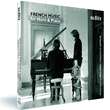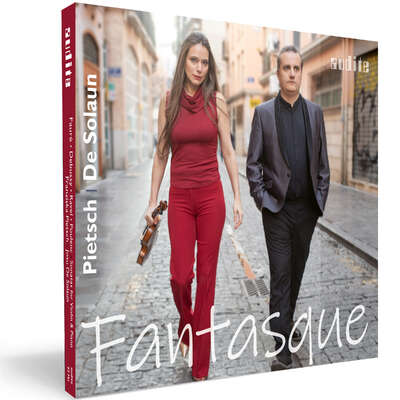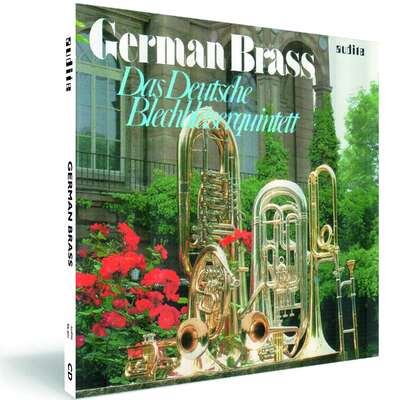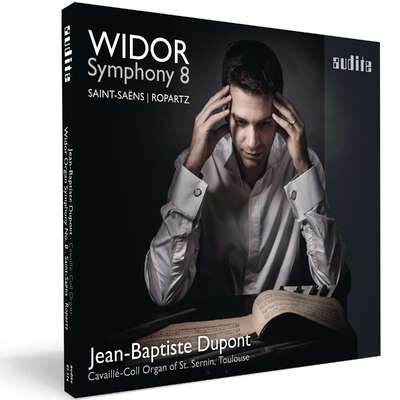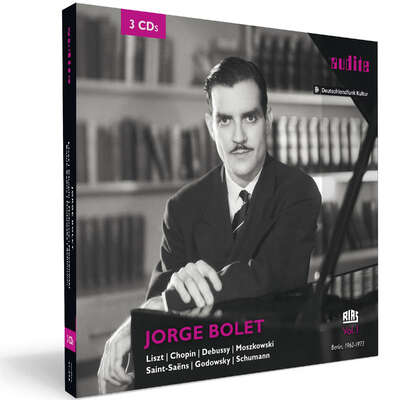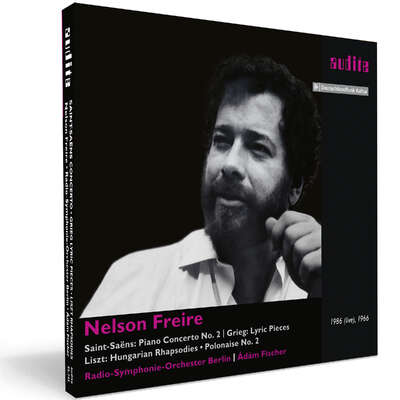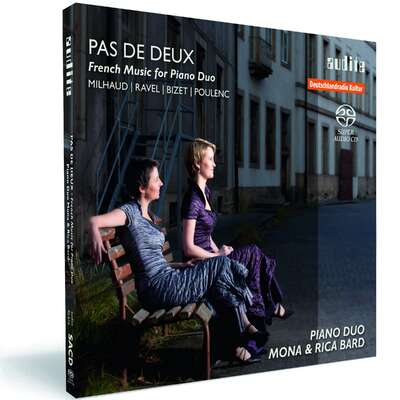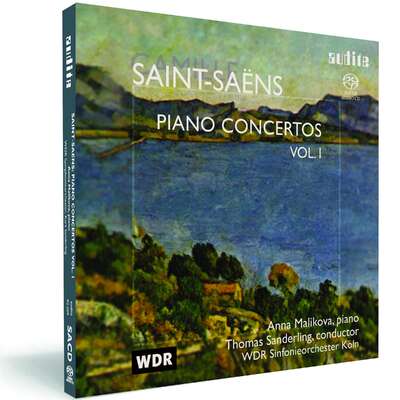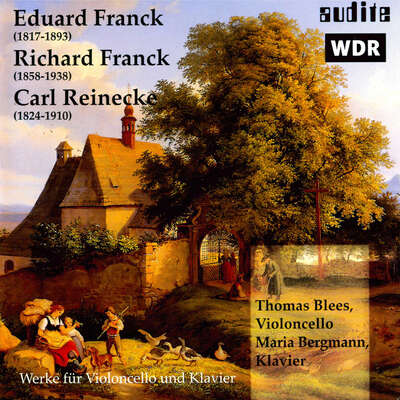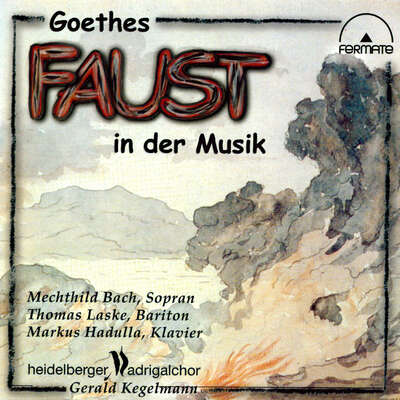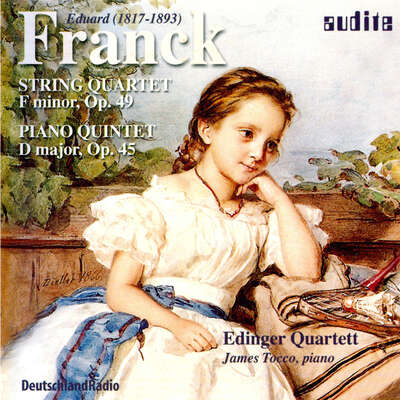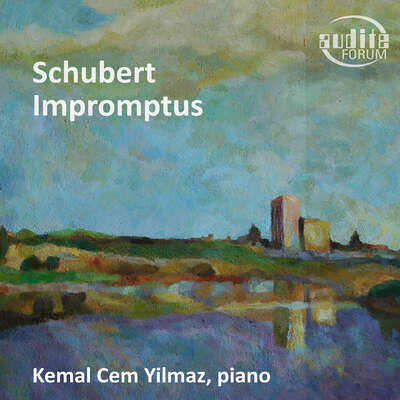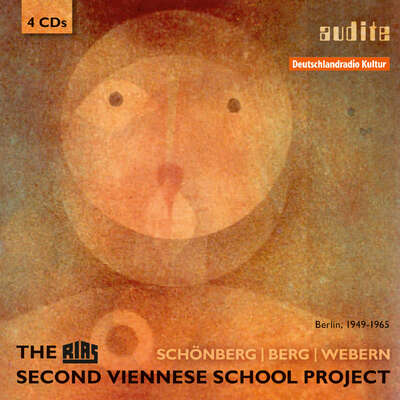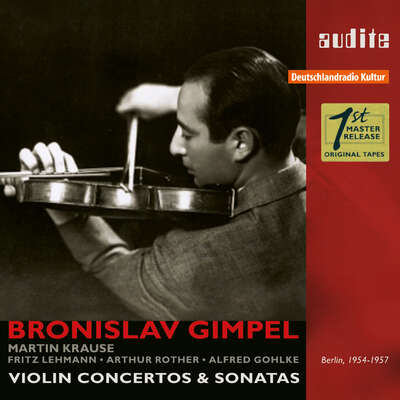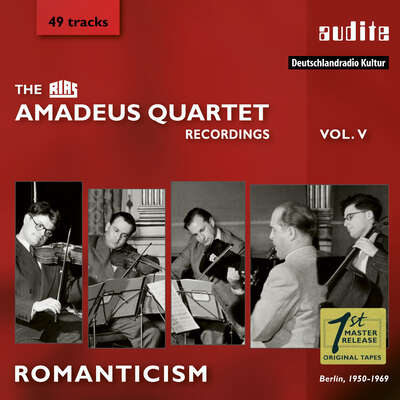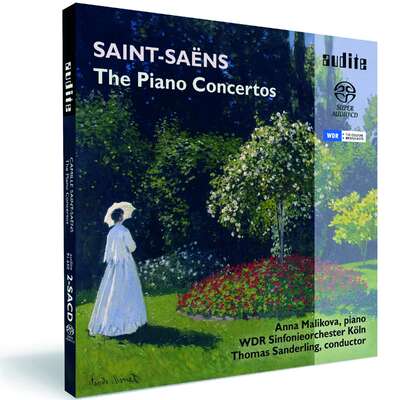
This selection of French music for horn and piano from the nineteenth and twentieth centuries reveals the increasing variety in sound which the horn was able to produce thanks to the invention of valves.more
This selection of French music for horn and piano from the nineteenth and twentieth centuries reveals the increasing variety in sound which the horn was able to produce thanks to the invention of valves.
Details
|
French Music for Horn and Piano
French Music for Horn and Piano |
|
| article number: | 97.538 |
|---|---|
| EAN barcode: | 4022143975386 |
| price group: | BCA |
| release date: | 15. July 2011 |
| total time: | 51 min. |
Informationen
The history of the horn and its technical development has been of particular importance to French music for a long time. In contrast to Germany, horn players in France initially declined to use the valved horn after its invention in the nineteenth century, which was reflected in the style of composition of the time. Juxtaposing works for horn and piano of the nineteenth and twentieth centuries allows an insight into the different playing techniques of the instrument and its development from natural to valved horn, the turning point of which is exemplified by Paul Dukas’ Villanelle.
The two Italian musicians Guglielmo Pellarin (horn) and Federico Lovato (piano) are making their joint recording début with this disc and have also chosen rarely heard works by the contemporary French composers Jean-Michel Damase and Jean-Michel Defaye, featuring surprising jazzy elements. The Sonata for Horn and Piano by Jean-Michel Damase is a premiere recording.
Guglielmo Pellarin is principal horn of the Orchestra dell’Accademia Nazionale di Santa Cecilia in Rome. He also regularly performs with the Symphonica Toscanini, the orchestras of the Teatro Verdi di Trieste and the Teatro alla Scala di Milano and the Filharmonica della Scala under conductors including Lorin Maazel, Roberto Abbado and John Eliot Gardiner. Guglielmo Pellarin has won numerous prizes. He has toured in Italy, Austria, Slovenia and Canada.
Federico Lovato studied piano at the Conservatorio Benedetto Marcello in Venice and at the Accademia Pianistica Internazionale Incontri col Maestro in Imola. He has won numerous national and international competitions. Federico Lovato has given solo and chamber performances throughout Europe and the US, including at the Gasteig in Munich, Teatr Mały in Warsaw, Teatro alle Erbe in Milan and Sala Mozart in Bologna. He regularly performs with a variety of groups at famous festivals. His repertoire spans from classicism to contemporary music. In addition to his career as concert pianist he teaches and is the Artistic Director of the orchestra I Solisti in Villa.
Reviews
www.musicweb-international.com | January 2013 | Jack Buckley | January 1, 2013
If you want to know about the development of a musical instrument during the nineteenth and twentieth centuries, it shouldn’t come as a surprise toMehr lesen
This spirit of enquiry often remains in the music long after the particular development of the instrument takes place – an audible act of discovery, so to speak, alive for posterity.
The German recording house, Audite, have turned their lights onto the horn. That instrument was called the French horn when I was growing up. Heaven knows why. Maybe to distinguish it from little boy blue, whom you will remember, was fast asleep under a haystack when he ought to have been blowing his horn.
Well Guglielmo Pellarin is not asleep nor under a haystack. He has been blowing his horn as Principal of the Santa Cecilia Orchestra since 2008, as readers of my dispatches from Rome will know, from the S&H Live Music section of this website. Still remarkably young and reading for a Higher Mathematics degree between orchestra and guest performances all over Europe, he has joined forces with the equally talented young pianist, Federico Lovato, to produce a disk which is as entertaining as it is informative.
Saint-Saëns is the supreme example of the enterprising spirit just mentioned. He was eighty-six when he died in 1921 and had begun to compose at the age of seven and give piano recitals at the age of eight, continuing uninterrupted until his end. Claudio Arrau told me that he had attended one of these recitals as a boy and heard pianism of incomparable refinement. As was usual at the time, Saint-Saëns had played wearing white linen gloves. Sadly, he was not enthusiastic about the then new fangled invention of recording which he thought gave no real idea of what the piano sounded like. He was right on this too, we have to concede. So we have to make do with piano-rolls of his playing, which already give some idea of what Arrau was talking about. His output as a composer is enormous and for every combination of voices and instruments, including stage-works. He was also keen to provide music for instruments in the development phase, hence his two Romances for horn and piano on this CD.
Here, as much as with his decision to have no truck with recording, his artistic accomplishment depends more on the resistance to change than with embracing its possibilities. Heinrich Stölzel is usually credited, around 1814, as the inventor of the horn’s valves, which permit the instrument to play all twelve notes of the chromatic scale without using a hand inside the instrument’s bell to alter the pitch. Traditional composers – Saint-Saëns among them – remained suspicious of the new valves and preferred what they continued to refer to as the natural horn. In fact, the valve horn could also produce the notes in the same old (pre-valve) way. Mr Pellarin often does so. What did make a difference was how the composer conceived his piece. There is no question that Saint-Saëns gives the horn player a wake-up call, asking him to use his hand and not the valves to alter the pitch.
Both Romances for horn (or cello) and piano are clearly conceived with the intimacy of the Paris salons in mind. Charm and elegance are to the fore and Saint-Saëns is a master of both. So are both these players. Pellarin enjoys a challenge as well as letting you hear that it costs him no effort to make this fine sound. Federico Lovato (a cellist as well as pianist) delights us in the matching fluency of his playing, recalling Arrau’s impression of the composer’s pianism. The Op.67 is more musically adventurous than the Op.36, which relies on an extremely open simplicity. These boys have rather a good line in the take-it-or-leave-it stakes.
In a curious bit of programming, sandwiched between these two Romances is the sonata of Jean-Michel Damase, a pianist/composer born in 1928. There is, however, a connection with Saint-Saëns. Damase too is on record as saying he prefers sincerity over innovation for the sake of innovation. The sonata, in three brief movements is a fine exploration of the horn’s possibilities, making it an ideal vehicle for Pellarin’s talent. I had momentarily forgotten what an enormously wide range the horn has. Much the same goes for its expressive chromatic colourings. Damase begins in the bass register and Pellarin is one of the few players who can deliver a melody here without making it sound as though the instrument is farting. The golden steadiness of tone takes on extra glitter in the chromatic passages. The sonata is entirely tonal. In the opening allegro he quotes the main theme of the Siegfried Idyll, which makes an appearance again in another surprise context in the finale’s allegro vivo. In between, the andante is a canon with variations, somewhat recalling the finale of the violin sonata of Franck, who had been the teacher of Damase’s teacher. The demanding piano part of the sonata is delivered with aplomb by Lovato.
Jean-Michel Defaye (b.1932) is out of that fertile Nadia Boulanger nest, and largely known as a composer of film music. His ALPHA for horn and piano is effectively a horn cadenza with piano accompaniment, making it, in that sense, the most exploratory piece on the disk. Pellarin’s muted echo effects are so beautifully placed that the listener is convinced that there are two horn players. This again is a top-to-bottom exploration of the instrument’s range and exploring is what Guglielmo Pellarin does best.
Francis Poulenc was one of music’s most outstanding playboys. That is what he did with music: he played with it in the most intriguing, challenging and witty way. It is one of music history’s great tragedies that there are not more composers like him. He only wrote what he wanted to write. No problems with cash: the family’s pharmaceutical company kept him well oiled. Many of the pieces were written in friendship and admiration of particular players, most of them in his last period. The wind quintet with piano was one such jewel. I remember how young horn players whom I had invited to participate in this quintet would almost invariably say to me, something along the lines of. This horn part is perfectly written for this instrument; I only wish I were a better horn player. The masterly sonatas for flute, clarinet and oboe, all with piano, also belong to this period.
The Elégie for horn and piano was written in memory of Dennis Brain, after he died in a car accident in 1957. The piano provides the background for the horn’s meditative and sometimes militaristic homage to the great player. Shades of the last post come from the horn with some exquisitely placed muted tones from Guglielmo Pellarin. Evidently this is a tribute which both the composer and these two players have felt deeply. For me, it is the most moving piece here.
A nice musical lollipop forms a final encore. When I was writing poetry, the villanelle was one of my favourite structures, where the poet is restricted to only two rhymes and a recurring line which is required to pop up as a refrain in specified places. The trick is to make the familiar line sound shockingly new by virtue of its new context, as it does somewhat in Dylan Thomas’s Do Not Go Gentle Into That Good Night or even better in Elizabeth Bishop’s One Art. Needless to say, I wrote nothing to set alongside these masterpieces. Paul Dukas (he of The Sorcerer’s Apprentice) wrote a villanelle for horn and piano. A nice bit of sorcery it is too. Pellarin has some fun passing between the pastoral sections, where he changes the pitch with his right hand in the bell and the helter-skelter très vif bits where he uses the valves. The fun is neatly and unobtrusively passed on to the listener.
There is an excellent note on this repertory in the CD’s accompanying booklet by Knut Andreas, in German, which I have shamelessly and joyously made use of in these notes. The translation of Dr Andreas’s notes is beautifully done in English by Viola Scheffel – very useful if your German is as shaky as mine.
Frankenpost | Donnerstag, 2. Februar 2012 | Michael Thumser | February 2, 2012 Druckvolle Kammerkunst
Solokonzerte von Mozart, Rösler, Richard Strauss, Sonaten von Brahms: DasMehr lesen
theartsdesk.com
| Saturday, 14 January 2012 | Graham Rickson | January 14, 2012
Classical CDs Weekly: Gál, Grieg, Liszt, Schubert, Pellarin
Viennese symphonies, piano warhorses and an Italian plays French music for horn and piano
The familiar (to horn players at least) nestles alongside a couple of welcome rarities in this impeccably played horn and piano recital. The horn is aMehr lesen
Poulenc’s Elégie is one of the most disquieting pieces by this still underrated composer. The 12-note opening theme rapidly cuts into edgy staccato writing, the violence perhaps suggesting the tragic demise of the horn player Dennis Brain, to whose memory it was dedicated. The Sonate by Jean-Michel Damase makes brilliant use of the extremes of the horn’s range; Pellarin’s fruity low register delights here. Jean-Michel Defaye was a pupil of Nadia Boulanger; his ALPHA is occasionally dissonant and unsettling before it lets the horn sing. A superbly executed recital, beautifully accompanied by pianist Federico Lovato.
Fanfare | 01.01.2012 | Robert Markow | January 1, 2012
Guglielmo Pellarin, principal horn in the Santa Cecilia National Academy Orchestra in Rome, turns in a program of six works by five French composers.Mehr lesen
The Romance was a favorite genre of Saint-Saëns, and he wrote nearly a dozen of them for various instrumental and vocal combinations. Op. 36 is the well-known one for horn and piano; op. 67 is an arrangement of the fourth movement of the Suite for Cello and Piano, op. 16 (a fact not mentioned in the otherwise excellent program notes).
I particularly like the spirit of adventure Pellerin brings to his playing. It is always imaginative, full of ideas, and demands the listener’s full attention. Coupled with what appears to be an innate capacity for lyricism plus technical facility and a pleasing tone, this CD can be added to my growing pile of heartily recommended horn recitals on CD.
Ensemble - Magazin für Kammermusik | 6-2011 Dezember/Januar | Ernst Hoffmann | December 1, 2011 Sanftes Horn
Mit dem Horn verbindet man gern Wucht und Klangstärke, Bestimmtheit undMehr lesen
American Record Guide | 01.11.2011 | Barry Kilpatrick | November 1, 2011
An excellent recording of Italians playing French music. Guglielmo Pellarin is principal horn of the Santa Cecilia Academy Orchestra in Rome; FedericoMehr lesen
www.klavier.de
| 09.10.2011 | Tobias Pfleger | October 9, 2011
Französische Musik für Horn & Klavier: Werke von Saint-Saens, Damase, Defaye u.a.
Schärfe in der Süße
Guglielmo Pellarin und Federico Lovato widmen sich französischer MusikMehr lesen
klassik.com | 09.10.2011 | Tobias Pfleger | October 9, 2011 | source: http://magazin.k... Schärfe in der Süße
Der Titel „Französische Musik für Horn & Klavier“ lässt anMehr lesen
hifi & records | 4/2011 | Heinz Gelking | October 1, 2011
Damase, Defaye, Dukas u.a.
Französische Musik für Horn und Klavier
Man möchte glauben, höchstens Mozart und Brahms, die das Horn sehrMehr lesen
Stereo | 10/2011 Oktober | Holger Arnold | October 1, 2011
In keinem europäischen Land hielt sich das ventillose Naturhorn soMehr lesen
kulturtipp | 20/11 (24. - 30. September 2011) | Fritz Trümpi | September 24, 2011 Hornmusik à la française
Das Horn ist in seiner solistischen Erscheinung gewöhnlich nicht geradeMehr lesen
Fono Forum | September 2011 | Holger Arnold | September 1, 2011 Hochvirtuos
In keinem europäischen Land hielt sich das ventillose Naturhorn so hartnäckig wie in Frankreich, erst 1903 verschwand das Instrument aus demMehr lesen
In seiner Elegie brachte Francis Poulenc die Erschütterung über den Unfalltod des englischen Hornisten Dennis Brain zum Ausdruck. Das 1958 uraufgeführte Stück ist ein düsteres, tragisches Werk, das gleich zu Beginn mit einer Reihe von Zwölftonklängen irritiert.
Neben diesen Standardwerken enthält die CD mit der Sonate von Jean-Michel Damase (geb. I928) und "Alpha" von Jean-Michel Defaye (geb. 1932) zwei im spätromantischen Geist stehende, nicht minder attraktive Raritäten. Der italienische Hornist Guglielmo Pellarin zelebriert das anspruchsvolle Programm mit delikater, schlanker Tongebung, feinem musikalischen Gespür und brillanter Technik, wirkungsvoll unterstützt von seinem Landsmann Federico Lovato.
Der neue Merker | 24.08.2011 | DZ | August 24, 2011 Französische Kammermusik und Italienisches auf dem Klavier
Wenn auch der Hornklang getragen vom großen Sinfonieorchester womöglichMehr lesen
Hessischer Rundfunk | hr2-Kultur: Der CD-Tipp, Freitag, 12.08.2011, 13.05-13.30 Uhr | Martin Grunenberg | August 12, 2011 Der CD-Tipp
Heute mit Martin Grunenberg. Französische Musik für Horn und KlavierMehr lesen
The Independent | Friday, 29 July 2011 | Andy Gill | July 29, 2011
This collection of pieces from the 19th and 20th centuries is intended toMehr lesen
